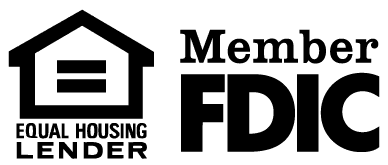When you’re looking to qualify for personal loans, it’s essential to understand the steps that can greatly boost your chances of approval. First, knowing how to improve your credit score can make a world of difference. But that’s just the beginning. You’ll also need to demonstrate a stable income, which plays a pivotal role in gaining lenders’ confidence. Reducing your existing debt can improve your debt-to-income ratio, making you a more attractive candidate. However, choosing the right lender and preparing the necessary documentation are equally important. Curious about how to master these steps effectively?
Improve Your Credit Score
A strong credit score acts like a golden ticket when qualifying for personal loans. Your credit score is a reflection of your financial responsibility, and lenders use it to assess the risk of lending you money.
To improve your credit score, you need to focus on two main areas: credit utilization and payment history.
First, let’s tackle credit utilization. This is the ratio of your credit card balances to your credit limits. Aim to keep your credit utilization below 30%. If you’ve got a credit card with a $10,000 limit, try to keep your balance under $3,000.
Paying down existing debt and not maxing out your credit cards will help lower this ratio, enhancing your score.
Next, your payment history greatly impacts your credit score. Lenders want to see that you consistently pay your bills on time. Set up automatic payments or reminders to guarantee you never miss a due date.
Even one late payment can negatively affect your score, so prioritize this. By maintaining a low credit utilization and a clean payment history, you’re well on your way to improving your credit score and qualifying for that personal loan.
Demonstrate Stable Income
Improving your credit score lays a solid foundation, but showing lenders you have stable income is just as important. Lenders need assurance that you can make consistent loan repayments, and a reliable income stream is key to providing that confidence.
To demonstrate stable income, make sure your employment history is well-documented and shows consistent work. If you’ve had the same job for several years, it reflects positively on your financial stability. Even if you’ve changed jobs, showing that you’ve moved into positions with equal or greater responsibility and pay can work in your favor.
Income verification is another vital aspect. Gather all necessary documents like pay stubs, tax returns, and bank statements that prove your income. These documents help the lender verify your claims and give them a clearer picture of your financial health.
If you’re self-employed, it’s even more important to have detailed records, including profit and loss statements and recent tax returns.
Reduce Existing Debt
To boost your chances of qualifying for a personal loan, one smart move is to reduce existing debt, as this can greatly improve your debt-to-income ratio. Lenders prefer borrowers with a lower ratio, as it indicates you can manage your finances responsibly.
Start by evaluating your current debts and consider using debt consolidation to make payments more manageable. By combining multiple debts into one, you can often secure a lower interest rate and simplify your monthly payments.
Next, focus on solid budgeting strategies to maintain financial discipline. Create a detailed budget that tracks your income and expenses, ensuring you allocate enough funds to pay down your debts each month.
Prioritize high-interest debts first, as this can save you money over time and reduce the total amount you owe. Additionally, cut unnecessary expenses to free up more cash for debt repayment.
Consider cancelling subscriptions you rarely use or dining out less frequently. Every extra dollar you put towards debt reduction helps lower your debt-to-income ratio and increases your loan eligibility.
Choose the Right Lender
After taking steps to reduce your existing debt, the next important aspect of qualifying for a personal loan is choosing the right lender. Picking a lender isn’t just about who offers the lowest interest rate. You need to take into account the lender’s reputation as well. A reputable lender will provide transparent information and won’t surprise you with hidden fees.
Research online reviews and ask for recommendations from friends or family to guarantee you’re dealing with a credible entity.
Next, pay close attention to the loan terms offered by potential lenders. Loan terms include the interest rate, repayment period, and any associated fees. Make sure you understand all the terms before agreeing to anything.
Are there penalties for early repayment? How is the interest calculated? Clarifying these details upfront can save you from unexpected costs down the line.
Additionally, assess whether the lender offers flexible repayment options. Some lenders might allow you to adjust your payment schedule if your financial situation changes. This flexibility can be vital in maintaining your financial health.
Prepare Necessary Documentation
When you’re ready to apply for a personal loan, gathering the necessary documentation is essential. Lenders require various documents to assess your creditworthiness and guarantee you can repay the loan.
Start by preparing your identification documents, such as a valid driver’s license or passport. These confirm your identity and residency, which are critical for your loan application.
Next, focus on your financial statements. You’ll need to provide recent pay stubs or, if you’re self-employed, tax returns, and profit and loss statements. These documents give the lender a clear picture of your income and financial stability. Consistent income indicates a lower risk, increasing your chances of approval.
In addition, compile your bank statements from the past few months. These demonstrate your spending habits and available funds, helping lenders gauge your ability to manage finances.
If you have existing debts, prepare statements for those accounts too.
Frequently Asked Questions
What Is the Typical Interest Rate Range for Personal Loans?
When you’re considering personal loans, it’s crucial to understand the interest rate range. Typically, personal loan interest rates range from about 6% to 36%.
Factors like your credit score, income, and debt-to-income ratio can influence these rates. Additionally, loan type differences matter; secured loans often have lower rates than unsecured ones.
Always compare options and understand interest rate factors to choose the best personal loan for your financial situation.
How Long Does the Personal Loan Approval Process Usually Take?
When you’re applying for a personal loan, the approval timeline can vary based on several application factors.
Typically, the process takes anywhere from a few hours to a couple of weeks. Your credit score, income verification, and the lender’s specific requirements all influence how quickly you’ll get a decision.
To expedite the process, make certain all your documentation is ready and accurate. This guarantees you won’t face unnecessary delays during approval.
Can I Apply for a Personal Loan With a Co-Signer?
Yes, you can apply for a personal loan with a co-signer.
Having a co-signer can provide significant benefits, especially if your credit score isn’t stellar. The co-signer boosts your application process by offering additional security to the lender.
This support may help you secure better terms or a larger loan amount.
Just confirm your co-signer understands their responsibility, as they’ll be liable if you can’t make payments.
Are There Personal Loans Available for People With No Credit History?
You’re wondering if personal loans exist for people with no credit history. Yes, they do!
Alternative lending options can help you. Consider lenders that specialize in working with those building credit. They might offer loans based on your income or employment history instead of credit.
How Does the Loan Amount Affect the Repayment Terms?
When you’re considering a personal loan, the loan amount directly impacts your repayment terms. A larger loan amount often means higher monthly payments or a longer repayment period.
Lenders might offer different interest rates based on the loan amount, which affects how much you’ll pay over time. By choosing a loan amount that fits your budget, you can manage your repayment terms more effectively, avoiding unnecessary financial strain.
Conclusion
By focusing on these key strategies, you’ll boost your chances of qualifying for a personal loan. Start by improving your credit score and maintaining a low credit utilization ratio. Demonstrate stable income through consistent employment and thorough documentation. Work on reducing your existing debt to improve your debt-to-income ratio. Choose the right lender by researching their reputation and understanding loan terms. Finally, gather all necessary documentation to present a strong application package.




